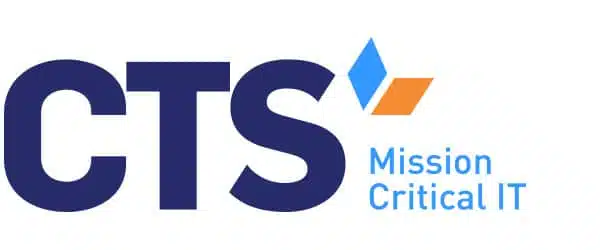Digital tools now take center stage in modern classrooms, which means managing mobile devices has evolved from a convenience to a necessity. Schools are no longer just buying hardware; they’re managing an entire ecosystem that includes devices, apps, data, and security protocols.
For IT coordinators and administrators, the challenge isn’t just about distributing tablets or laptops—it’s about maintaining control, visibility, and security, and preparing classrooms to function reliably every day.
Mobile device management (MDM) provides a structured way to manage this complexity. It gives schools the tools to configure, monitor, and secure student and staff devices across campus, whether they’re school-issued or part of a BYOD program.
Without it, classroom technology quickly shifts from an asset to a liability.
Does Device Management Matter in Education?
Effective device management goes far beyond installing software on student tablets. It creates a scalable framework for maintaining instructional continuity, protecting sensitive data, and minimizing IT headaches in a world where mobile learning is the norm.
Key Challenges Without an MDM Solution
- Unsecured devices become gateways to student data breaches and compliance violations.
- App and website usage becomes difficult to regulate, increasing classroom distractions.
- IT teams lose visibility into personal devices and shadow IT setups, which introduce security risks.
- Onboarding and managing devices manually eats into limited time and resources.
- Devices lost or stolen outside of school hours cannot be remotely wiped or tracked.
- Operating systems and applications remain outdated, exposing devices to vulnerabilities.
Mobile Device Management in Schools
MDM software simplifies and secures the way schools manage mobile technology across grade levels, campuses, and device types. A reliable mobile device management solution should support administrators with:
- Centralized dashboards that allow IT staff to remotely configure and monitor devices.
- The ability to manage mobile devices in bulk, reducing time spent on manual setup.
- Enforcement of usage policies during school hours, limiting access to non-educational apps and websites.
- Options to lock down lost or stolen devices instantly to protect student information.
- Secure enrollment workflows for both institution-owned and BYOD devices, streamlining the user experience.
- Integration with existing enterprise mobility management (EMM) platforms to enhance control across the network.
Learn more: Emerging AV Technologies for Schools in 2025
How to Choose the Right MDM Solution for Your School
Not every mobile device management solution is created for the particular demands of an educational environment. The needs of a K–12 district vary significantly from those of a university IT department. Selecting the right MDM software starts with understanding your infrastructure, user base, and compliance requirements.
What to Consider When Evaluating MDM Tools
- Scalability: Ensure the MDM solution can handle current device volume and projected growth without performance loss.
- Platform Compatibility: Verify support for all operating systems in your environment—iOS, Android, ChromeOS, macOS, or Windows.
- User Management: Look for tools that sync with directory services (like Google Workspace or Microsoft Entra ID) to streamline user provisioning.
- BYOD Support: Choose solutions that let you manage personal devices without compromising user privacy or network security.
- Remote Capabilities: Prioritize the ability to manage mobile devices offsite, including remote troubleshooting and the ability to remotely wipe data if needed.
- Compliance Features: Ensure data protection policies align with FERPA, COPPA, and any local student privacy laws.
- App and Content Control: Look for granular controls that let administrators whitelist or blacklist apps, schedule app usage, and push educational content.
- Cost Structure: Evaluate per-device pricing models and compare them to free MDM options offered by Apple School Manager, Google Admin Console, or Microsoft Intune for Education.
- Professional Guidance: Managed service providers (MSPs) can assist with tool selection by performing needs assessments, vendor comparisons, and implementation planning. MSPs that specialize in education can ensure you get the right solution for your schools’ needs.
Learn more: Building Out School IT Infrastructure: How MSPs Can Help
Device Setup and Deployment: Step-by-Step Guide
Once the MDM platform is selected, it’s time to roll out devices across classrooms with minimal friction. Proper setup ensures devices are ready for immediate use and managed securely from day one.
- Pre-enrollment Configuration: Define profiles, restrictions, and default apps before devices are distributed. This speeds up provisioning and reduces classroom disruption.
- Use Enrollment Programs: Apple School Manager, Google Zero-touch Enrollment, and Windows Autopilot allow bulk enrollment without physical handling of each device.
- Assign User Roles: Use identity management systems to assign role-based permissions; students, teachers, and admins each need different access levels.
- Push Policies and Apps: Deploy learning tools, testing software, and content libraries directly from the MDM console to individual devices or entire groups.
- Set Usage Schedules: Control when and how apps can be used during school hours to minimize distractions and preserve bandwidth.
- Perform Test Runs: Before going live, test a subset of devices to catch configuration issues and refine deployment workflows.
- Train Educators and Staff: Offer brief training sessions so teachers know what’s on student devices and how to escalate tech issues.
- Monitor and Iterate: Post-deployment, use reporting tools to track device performance, user activity, and security events.
Prioritizing Security and Control
With mobile learning, the classroom boundary stretches beyond school walls, and so does the responsibility to keep student devices safe, focused, and compliant. Mobile device management software provides the tools to enforce security policies and guide appropriate device use without disrupting instruction.
Security Enforcement Must-Haves
- Data Protection Controls: Encrypt sensitive information and enforce password policies across all managed mobile devices.
- Lost or Stolen Device Protocols: Enable remote lock and remotely wipe features to protect student data in case a device goes missing.
- App Whitelisting and Blacklisting: Prevent unauthorized app installs while ensuring access to educational tools.
- Web Filtering Rules: Limit internet access based on age, grade level, or learning objectives, keeping students on track and within safe digital spaces.
- Real-Time Alerts: Monitor devices for unauthorized access, malware installs, or suspicious activity and receive instant notifications.
Learn more: Physical Security Technology for Schools: What You Need and Where to Start
Next Steps: Manage Devices with Purpose and Confidence
Whether managing 50 Chromebooks or thousands of student tablets, mobile device management requires more than good intentions. It demands systems that scale, tools that adapt, and guidance that aligns with your educational goals.
By selecting the right mobile device management software, deploying it thoughtfully, and enforcing security policies that prioritize both safety and productivity, schools set the stage for long-term success.
Every school is different, and so are its technology needs. CTS specializes in supporting education institutions with tailored IT strategies, including mobile device management, cybersecurity, and long-term technology planning.
If you’re evaluating MDM tools or planning your next classroom deployment, our team is ready to help.




